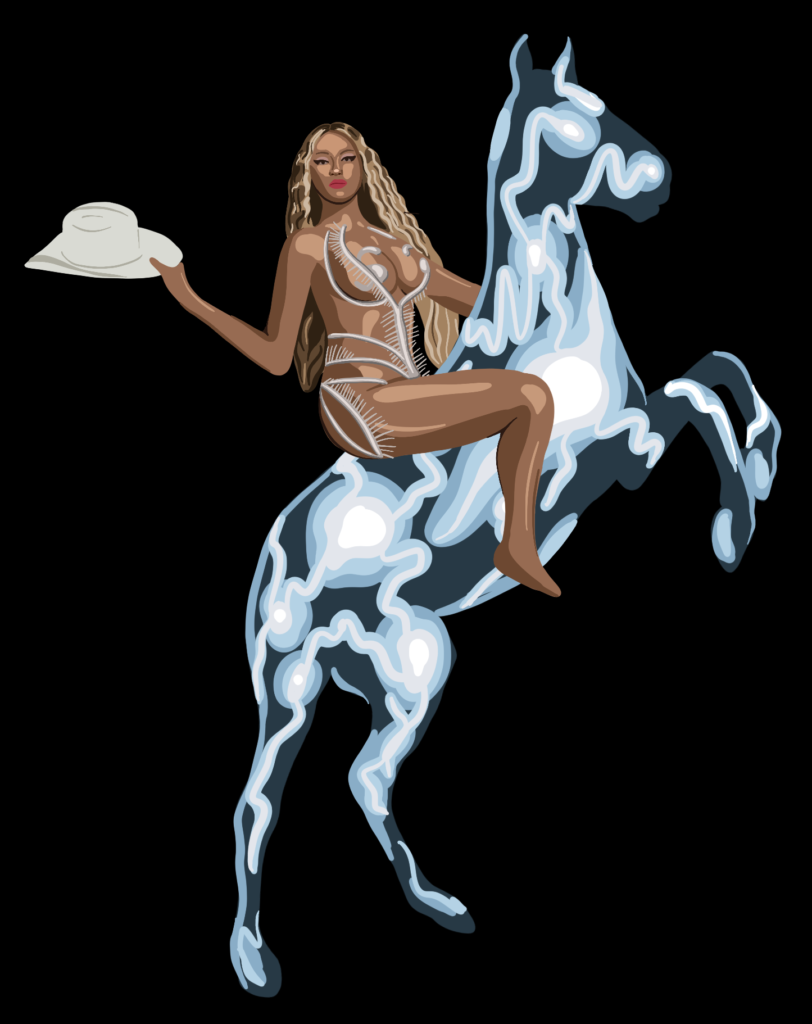Beyoncé steps up with new album, though her commentary on capitalism falls flat due to her actions

Beyoncé released her seventh studio album, “Renaissance,” on July 29 to an expectedly excited audience. Known for her high energy pop hits and incredible vocals, Beyoncé has once again crafted a masterful line up of both danceable and soulful songs that is best listened to in order.
Beyoncé expertly crafts a narrative which appeals to a large variety of people going through different life experiences. Songs like “PLASTIC OFF THE SOFA,” “VIRGOS GROOVE,” and “PURE/HONEY” speak to love both new and familiar. “VIRGOS GROOVE” in particular explores the duality of love, both yearning to better understand the subject of her infatuation while also desiring him physically. This is contrasted by songs like “BREAK MY SOUL,” “MOVE,” and “HEATED” which empower independence and support through friendship. Beyoncé provides a nuanced listening experience that not only provides good music to dance to, but also a variety of embodied experiences that allows the listener to find power in a number of different lived experiences. When listened to sequentially, the full narrative is understood, from love to loss to love renewed.
Songs like “THIQUE” ring particularly true for me. Lines like “girl look at your body” and “that’s that jelly” embody confidence in bodies beyond the beauty standard. While Beyoncé fits firmly within the body standard of today’s Black society she still manages to provide an anthem for anyone experiencing body insecurities. It tells the listener that they should revel in their real body, which is a shining light in the darkness of vapid internet expectations of beauty. She creates a sense of celebration that makes me just want to jump on a table and shake everything I got.
Taking inspiration from house music, Beyoncé pays homage to the culture that has helped shape her career for over two decades. “HEATED” uses phrases like “ten ten ten across the board” and “give me face face face face” to exemplify the creative influence ballroom has had on Black pop music while also solidifying itself in playlists for balls across America.
Later in the song Beyoncé references her Uncle Johnny in the line “Uncle Johnny made my dress.” While this comment might be lost on those who only listen to the album in clubs or on their drive to work, this is actually a reference to Beyoncé’s older cousin who died of AIDS when she was 17. Beyoncé’s mom, Tina Knowles-Lawson, wrote about this on Instagram saying “they took it so hard.” Uncle Johnny was known for loving house music and was directly involved in raising Beyoncé and her sister Solange. This album pays tribute to that love, functioning as a pseudo-love letter to her family member who has died. While Beyoncé is not openly queer herself, she has been an icon for self love and acceptance, appealing to a broadly queer audience.
However, I would be remiss to not understand the context in which this album finds itself. In her song “ENERGY” (feat. Beam), Beyoncé says “only double lines we cross is dollar signs,” referencing her support for boycotts. However, she had recently come under fire for hosting a party at the Chateau Marmont during a boycott stemming from workplace toxicity.
Furthermore in her song “BREAK MY SOUL,” she says “work by nine, then off past five, they work my nerves, that’s why I can’t sleep at night.” This comment can seem a bit empty when one looks at the wealth Beyoncé has amassed in addition to the fact that poverty is an abstract concept to her, being that her father was wealthy before Beyoncé was successful. This is not to say that her success is not well deserved by any means. Instead, it begs the question: Should Beyoncé be doing more with her vast amounts of wealth and influence? Is it important for her to practice what she preaches? Or is the music designed simply to be relatable, a symbol of the ideas already upheld by a community who need someone to connect with?
While I do not have the answers to these questions, I believe they are important ones to ask when trying to understand the legacy and impact of these larger than life figures.
Subscribe to the Mossy Log Newsletter
Stay up to date with the goings-on at Lewis & Clark! Get the top stories or your favorite section delivered to your inbox whenever we release a new issue.

Leave a Reply